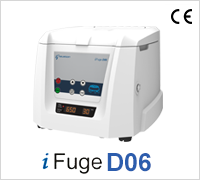Clinical Centrifuge Definition
Clinical centrifuge machines are the most basic machineries in any clinic. These equipment are used to test liquid found inside the living being. It separates plasma from the blood. It rotates on the axis on fixed density, sometimes 1500 RPM in one minute. The timer button is given on the equipment. The person who is performing the test sets the timer as per the test requirement.
Basically, how does clinical centrifuge functions?
It is a small equipment, and can be found in any biotechnology school and college lab. This machine is fixed on the axis which rotates in high speed in the same location and in the same speed. The laboratory person inserts the liquid in the tube and places a cap on it. The tubes can be of either plastic or glass. The capacity of the tubes vary from 10 ml to 100 ml. Then he or she inserts the tube in the equipment and shuts it. Timer is set with the required RPM. It works on the sedimentation principle where parts of water are separated (if you remember the chapter of sedimentation studied in the school). The same way particles are separated. The heavy density particles stays in the bottom and the light weighted comes up.
As per the need and requirement these following types of centrifuge can be used;
1. Micro Centrifuge
2. General purpose centrifuge
3. Large capacity
4. Super speed
Clinical Centrifuge Use
However, the type of fluid separation depends up on the density. And the density is determined by the type of centrifuge. When we say separation it means, separating plasma from the blood, protein from the fluid, other solid particles from the fluid. It also separates sediments from the urine. Such tests determine the type of disease in the living being.
Beside, density and timer there is a button called temperature. Different different tests require varied temperature, some require less and some require high.
These are the most common tests happen in the clinical centrifuge laboratory. It was earlier used to separate DNA from the blood, but now there are more advance technologies available for separating the DNA, and thus it is less popular in the centrifuge lab.
Training of Operation
The equipment comes with in-build safeguards. It is recommended to the laboratory operators to clean all the equipment in the lab twice a year.
Balancing of tubes is very important during the run. Make sure all the tubes are placed in front of each other to avoid unbalancing.
If, in case, equipment require extensive and frequent services, it is better to replace.
Introducing Neuation
Neuation offers new generation laboratory equipment like clinical centrifuge. It is an ISO 9001:2008 & iSO 13485:2003 certified company. It fulfills CE standards to supply all the products in the international market. It offers iFuge D06;
- It has a brushless motor
- Less maintenance
- Suitable for PPP (platelet poor plasma) and PRP (platelet rich plasma)
- Suitable for other diagnostic applications in the clinical or research laboratory
To know more, visit http://www.neuation.com/doctors-centrifuges.html
You must be logged in to post a comment.